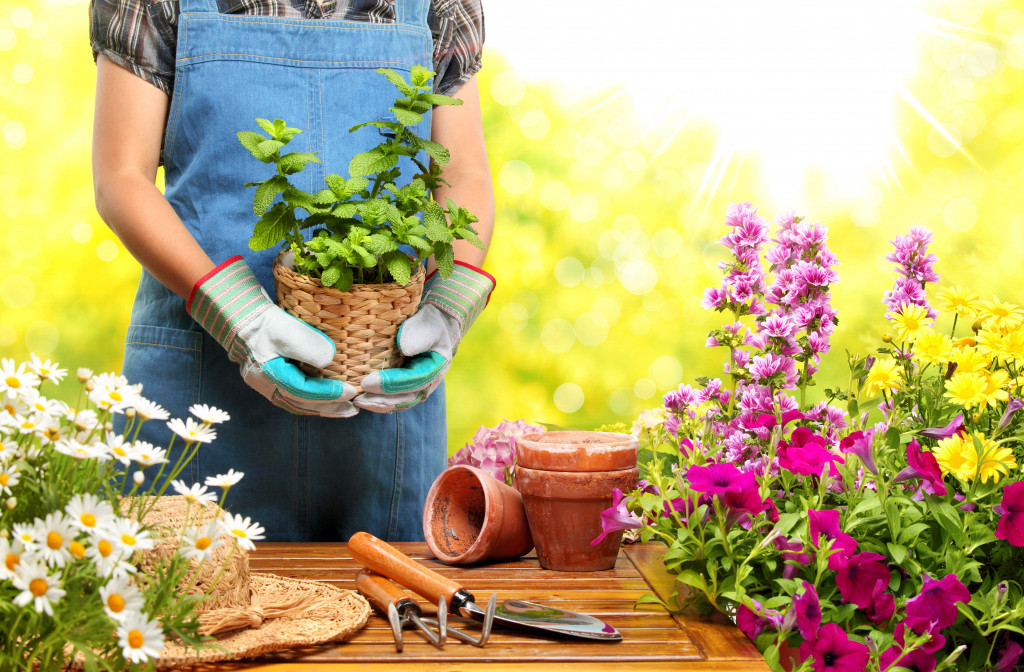For many people, gardening is a hobby that brings them great joy. It’s a way for them to escape the hustle and bustle of everyday life and connect with nature. According to some studies, gardening can also positively impact your mental health. It can induce relaxation, reduce stress levels, and boost your mood. This is why there are people who transform their backyards into large gardens.
However, there are instances when you may have to leave your current house and move to a new one. This can be very difficult, especially if you’ve spent years perfecting your garden. But don’t despair — there are ways you can somehow take your garden with you.
Restarting a garden may depend on how you make it possible. With a little planning and extra effort, you can have a beautiful garden in your new home in no time. Here are some tips on how to pursue gardening in a different house:
1. Make a list of the plants you want to take with you.
The first step is to list the plants you want to take to your new house. This way, you can determine which ones can be transplanted and which will need to be bought anew. You should also consider the climate in your new location and whether the plants on your list can survive in that environment.
Listing all the plants also gives you a rough estimate of the cost of transplanting or buying new plants. Setting a budget and allocating the necessary resources for your gardening project is important. If you have a list of the plants you want to take with you, it’ll be easier to figure out what needs to be done.
2. Choose the right location for your garden.
One of the most important aspects of gardening is choosing the right location for your plants. This is even more crucial when you’re starting a garden from scratch in a new house. You need to ensure that your chosen location receives enough sunlight and has well-draining soil.
It’s also important to consider the size of your new garden. If you have a smaller space to work with, you may need to be more selective with the plants you choose. But don’t worry — plenty of plants can thrive in small spaces.
Aside from that, it’s also important to know the condition of the new home you will move into. It’s better if you’re still in the process of choosing a property to settle in. Fortunately, some real estate companies offer houses for sale with a variety of options. They may have some homes with a large backyard perfect for starting a garden. There are also some houses with a balcony or patio where you can grow potted plants. This way, you can still take your plants with you when you move.

3. Prepare the soil in your new garden bed.
The next step is to prepare the soil in your new garden bed. This is important to ensure that your plants have the nutrients they need to grow and thrive. You can add organic matter to the soil, such as compost or manure. You can also use a shovel or tiller to loosen up the soil and make it easier for the roots to spread.
If you’re unsure how to prepare the soil in your new garden, you can always consult with a local gardening center or nursery. Look for someone you can talk to about plants and gardening in the area before you make any decisions. This way, you can be sure that you’re doing everything right.
4. Start planting and water your plants regularly.
Once you’ve prepared the soil, it’s time to plant your plants. Make sure to follow the instructions on the seed packet or nursery tag. This will give you an idea of how deep to plant the seeds and how far apart they should be.
If you moved to a place prone to scorching hot summers, clean your plants regularly. Procedures in watering during heatwaves may be different from watering your plants during other seasons too. On the other hand, if you moved to a location where it rains frequently, you might want to look into building a drainage system for your garden. This will help prevent your plants from getting waterlogged and dying.
You should know these things by researching your new location’s climate and weather conditions. Watering your plants properly is key to keeping them alive and healthy.
5. Fertilize your plants when necessary.
Your new garden will also need some fertilization to help the plants grow. There are many types of fertilizer that you can use, so it’s important to choose the right one for your plants. You can ask for recommendations from the gardening center or nursery where you bought your plants.
It’s also important to follow the instructions on the fertilizer package. This will ensure you’re using the right amount and not over-fertilizing your plants. Over-fertilization can be just as harmful as not fertilizing your plants at all.
Gardening is a rewarding activity that can bring you a sense of peace and satisfaction. It’s also great to bond with nature and connects with the earth. While taking your plants with you when you move can be challenging, it’s doable. By following these tips, you can create a new garden that’s just as beautiful — if not more — as your old one.

